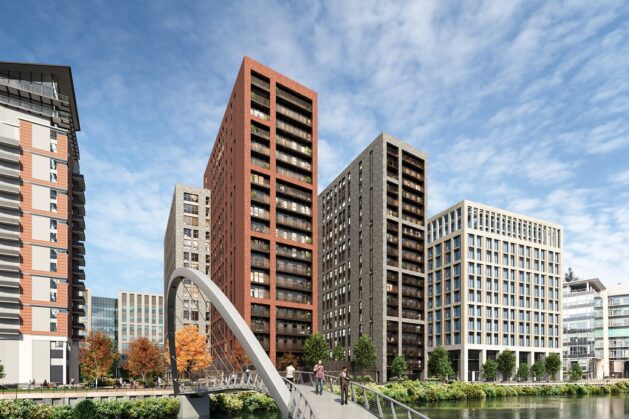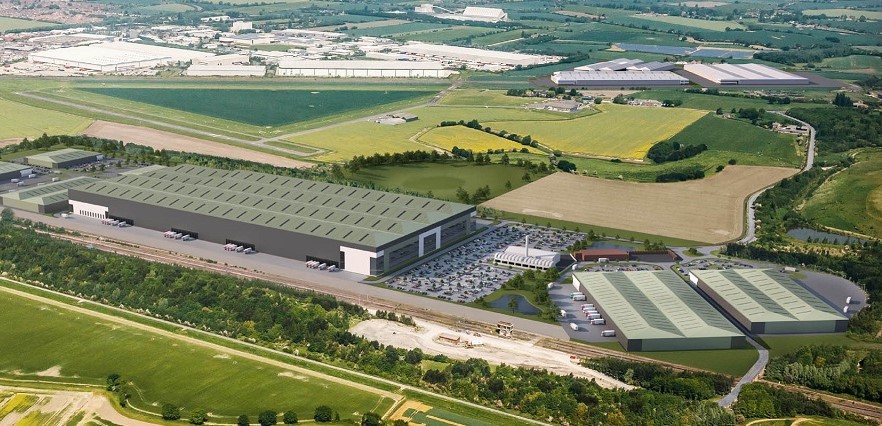Commentary
Q&A with LGIM’s Dan Batterton
Leeds and Manchester are on a par as the pension fund’s joint second biggest centres for build-to-rent investment outside London, with 1,000 units in each city. Dan Batterton, head of BTR at LGIM Real Assets, spoke to Paul Unger.
L&G’s £140m funding deal for Whitehall Riverside’s 500 new homes marks the third scheme backed by the pension fund manager in the city and, upon practical completion, will bring the number of new rental homes it has delivered in Leeds to slightly more than 1,000. Developer Glenbrook is leading the development of Whitehill Riverside, where completion is expected in April 2026. Bowmer + Kirkland has been appointed main contractor. The investment follows L&G’s acquisition of Mustard Wharf BTR site in 2017 and Tower Works in 2021 – both of which sit within Legal & General Investment Management’s (LGIM) Build to Rent Fund.
Is there more to come in Leeds?
Yeah, I hope so. We have money to invest right across the UK. We want to invest right across the country, and we want to invest in cities that are growing. These generally have the biggest supply-demand imbalance. Leeds is one of those. I look at Leeds and think ‘the economy is really strong, and getting stronger’. There’s an entrepreneurial spirit in the city, that means that businesses are being set up and that is creating jobs.
What these cities need is good quality housing, to attract a good quality workforce. And to provide homes where people want to live to the standard they want to live, to give them the lifestyles they want. And that’s what we’re trying to do. Rental accommodation isn’t for everybody, some people will want to own at different points in their life. But it’s providing flexibility, creating a more mobile workforce, making it easier for people to move to the city and move to employment.
How has the BTR product evolved?
Having dedicated workspace in the building where people can work but not necessarily in their own sitting room is important. That also allows us to get residents together so they can meet each other. There’s some interesting research that’s been done about loneliness in cities. And that’s something we’ve been looking at in terms of wellness and the mental health of our residents: making sure people know their neighbours helps. That starts on the architect’s drawing board with how we design for interaction and put communal space in areas where there’s a flow of people. So near entrances can we create areas where people dwell and stop and meet each other?
Another area that we’ve addressed through design is size in terms of fewer bedrooms: just over 50% of the apartments that we’re building in the new Leeds scheme will be one-bedroom apartments. Research on the city shows that the biggest area with a lack of supply is one-bedroom. This allows a more affordable price point. This allows people to rent an apartment, which is more affordable, in a location that they want to live right in the centre of the city.
What is your average lease length?
We let people sign leases up to five years, if they want. But within that they can leave whenever they want. What we’re trying to do is change the perception of renting being insecure. We go to our residents and say ‘you can sign a lease up to five years. We guarantee to you that you can rent that apartment for five years, assuming you pay your rent and you aren’t antisocial’. They have absolute certainty that they can continue renting now because we’re not going to sell their apartment. That’s not our business model. By removing that cliff edge, we find people stay for a bit longer. Because they don’t have to make a decision today about whether they’re going to sign a new lease, they don’t make the decision. And they keep staying until they want to leave. The proportion of residents that sign a new lease when their lease expires is very high. Usually, it would be around 50%. And we’re 60% to 70% at the moment, which I would love to say is because they receive an amazing service and they love where they live. I’m sure that’s part of it. But it is also a reflection of the complete lack of supply.
Are more investment deals likely to be agreed this year?
We will keep going and want to do more. Right across the UK we will be doing deals this year. In the wider market, I think we’ll see more participants coming in – the number of investors will grow. Perhaps strangely, a lot of investment over the last five years has been from non-UK investors. And that is because they are used to investing into the residential sector in their own markets. And it is absolutely normal in Germany, in the Netherlands, the Nordics, the US, for pension funds to invest into the residential sector and we’ve kind of been the outlier in the UK that that hasn’t been normal. And I think now the first movers have been the non-UK investors and we’re starting to see more UK pension funds recognising the value of the cashflow and I think also recognising the positive social impact that they increasingly want to deliver by investing their money.
UK investors are increasingly looking at the sector and seeing there’s a level of risk that has disappeared now because we have data. Having seen the performance over the last five or six years they’re getting much more comfortable.







Great to see the London money flowing – suspect the biggest task here remains the same as ever – getting them out of the City and onto the train to see life exists beyond Londinium –
By Jim